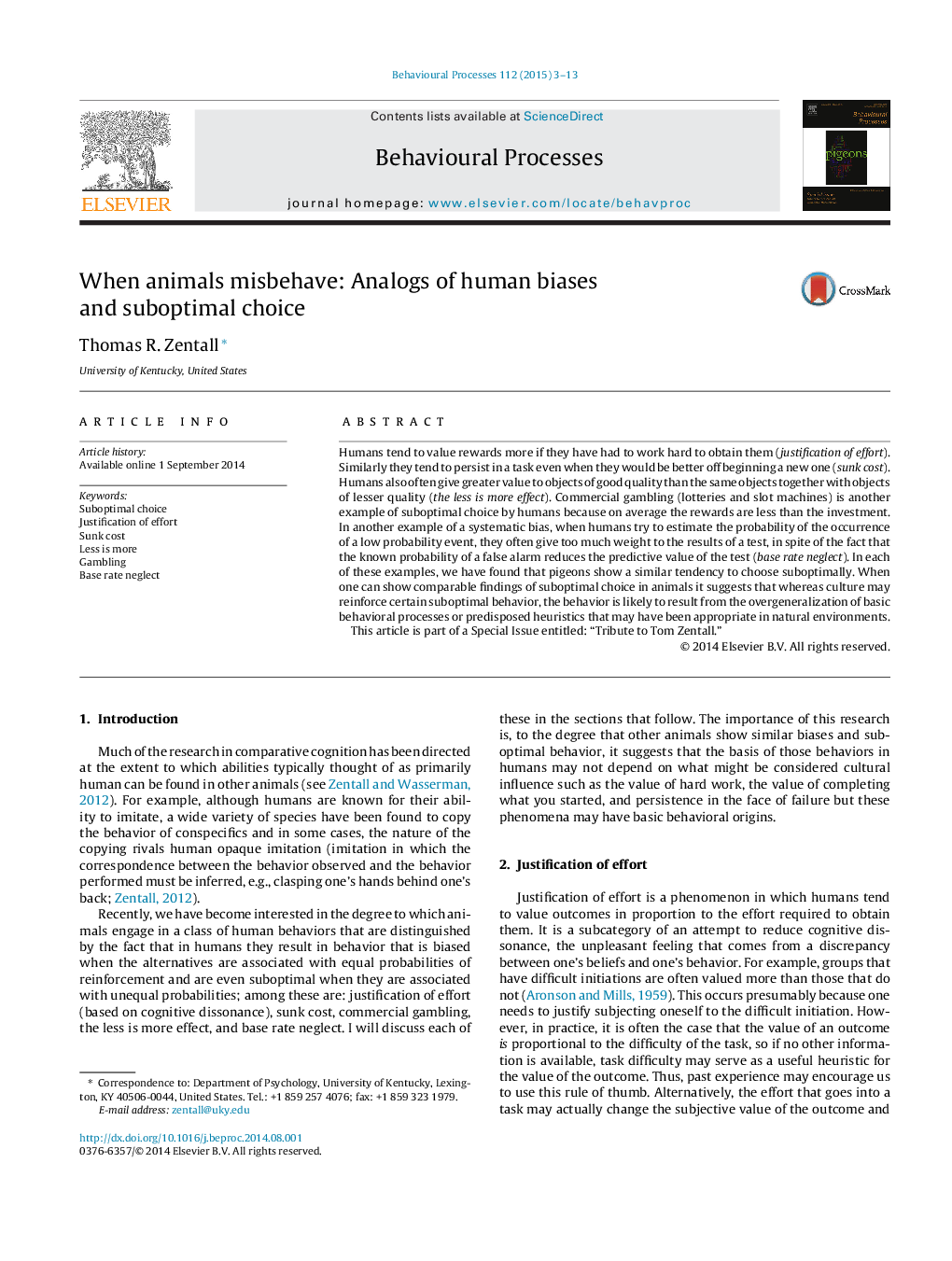| Article ID | Journal | Published Year | Pages | File Type |
|---|---|---|---|---|
| 2426629 | Behavioural Processes | 2015 | 11 Pages |
•Animal shows several biases thought to be unique to humans.•They value rewards more if they have to work harder for them.•They persist in tasks that they would be better of terminating.•They prefer less of a reward over more and show base rate neglect.•They “gamble” suboptimally on low probability high payoff rewards.
Humans tend to value rewards more if they have had to work hard to obtain them (justification of effort). Similarly they tend to persist in a task even when they would be better off beginning a new one (sunk cost). Humans also often give greater value to objects of good quality than the same objects together with objects of lesser quality (the less is more effect). Commercial gambling (lotteries and slot machines) is another example of suboptimal choice by humans because on average the rewards are less than the investment. In another example of a systematic bias, when humans try to estimate the probability of the occurrence of a low probability event, they often give too much weight to the results of a test, in spite of the fact that the known probability of a false alarm reduces the predictive value of the test (base rate neglect). In each of these examples, we have found that pigeons show a similar tendency to choose suboptimally. When one can show comparable findings of suboptimal choice in animals it suggests that whereas culture may reinforce certain suboptimal behavior, the behavior is likely to result from the overgeneralization of basic behavioral processes or predisposed heuristics that may have been appropriate in natural environments.This article is part of a Special Issue entitled: “Tribute to Tom Zentall.”
